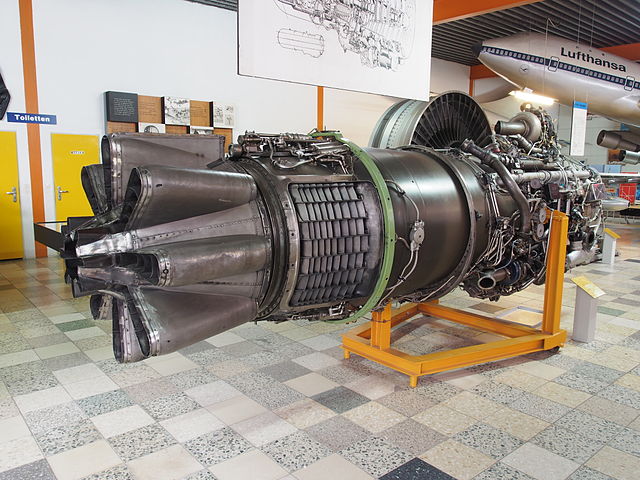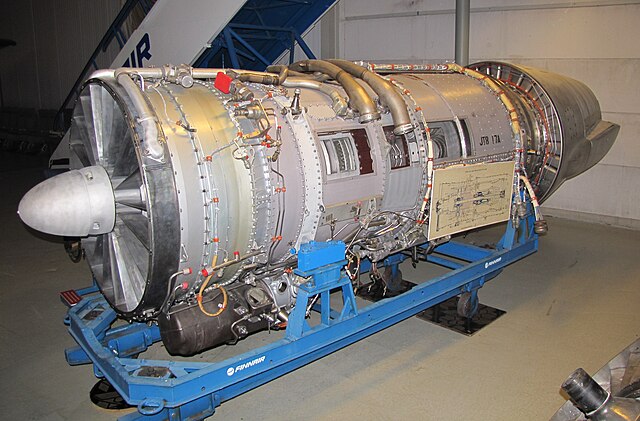The Rolls-Royce Olympus was the world's second two-spool axial-flow turbojet aircraft engine design, first run in May 1950 and preceded only by the Pratt & Whitney J57, first-run in January 1950. It is best known as the powerplant of the Avro Vulcan and later models in the Concorde SST.
Rolls-Royce Olympus
Gas-flow diagram of Olympus Mk 101
A turbofan or fanjet is a type of airbreathing jet engine that is widely used in aircraft propulsion. The word "turbofan" is a combination of the preceding generation engine technology of the turbojet, and a reference to the additional fan stage added. It consists of a gas turbine engine which achieves mechanical energy from combustion, and a ducted fan that uses the mechanical energy from the gas turbine to force air rearwards. Thus, whereas all the air taken in by a turbojet passes through the combustion chamber and turbines, in a turbofan some of that air bypasses these components. A turbofan thus can be thought of as a turbojet being used to drive a ducted fan, with both of these contributing to the thrust.
Chevrons on an Air India Boeing 787 GE GEnx engine
Rolls-Royce Conway low-bypass turbofan from a Boeing 707. The bypass air exits from the fins, while the exhaust from the core exits from the central nozzle. This fluted jetpipe design is a noise-reducing method devised by Frederick Greatorex at Rolls-Royce
General Electric GEnx-2B turbofan engine as used on a Boeing 747–8. View into the bypass duct looking forward from the bypass nozzle and showing fan exit stators/fan blades
The widely produced Pratt & Whitney JT8D used on many early narrowbody jetliners. The fan is located behind the inlet guide vanes.






